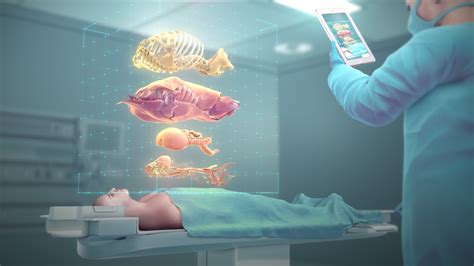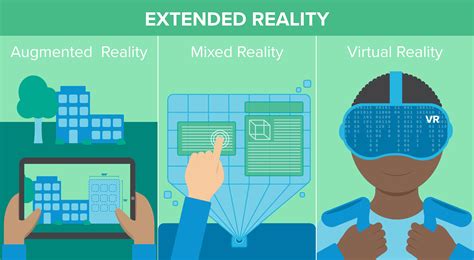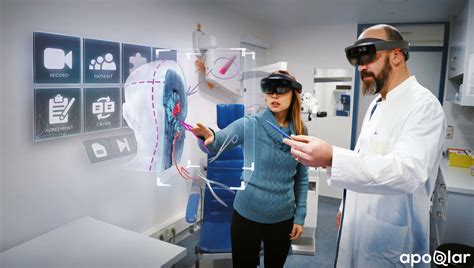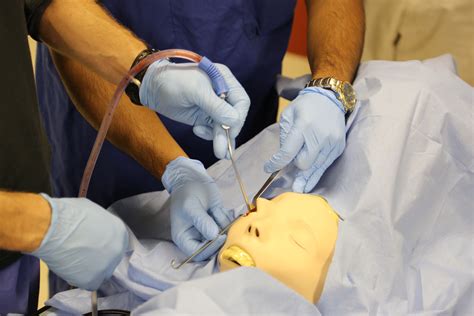Breaking News


Popular News


Learn about the impact of augmented reality on medical training, including its integration in education, enhanced learning experiences, improved surgical skills, and future trends in the field.Augmented Reality (AR) has made significant strides in various industries, and the field of medical training is no exception. As technology continues to advance, the integration of AR in medical education has opened up a world of possibilities for enhancing the learning experience and improving surgical skills. In this blog post, we will delve into the impact of augmented reality on medical training, exploring the introduction of AR technology, its integration into medical education, and the enhanced learning experience it provides. We will also examine the improvement in surgical skills resulting from the implementation of AR and look at future trends in AR for medical training. Join us as we explore how this innovative technology is revolutionizing the way medical professionals are trained and the potential it holds for the future of medical education.
Contents

Augmented Reality (AR) is a technology that superimposes digital information such as images, videos, or 3D models onto the real-world environment. It enhances the user’s perception of the surrounding environment by adding interactive virtual elements into the physical space. Unlike virtual reality, which completely immerses the user in a digital environment, AR integrates digital content with the user’s real-world environment.
AR technology is becoming increasingly popular in various industries, including healthcare. In the context of medical training, AR has the potential to revolutionize the way medical professionals learn and practice. By overlaying virtual images or simulations onto real patients or medical devices, AR can provide medical students and professionals with a more interactive and immersive learning experience.
The integration of AR in medical education allows learners to visualize complex anatomical structures, medical procedures, and pathologies in a detailed and interactive manner. This technology can greatly enhance the understanding of medical concepts and improve the retention of information, ultimately leading to better-trained healthcare professionals.
Moreover, AR technology can be used to create realistic surgical simulations, allowing trainees to practice and improve their surgical skills in a safe and controlled environment. This can greatly benefit medical students and residents in their training, as they can gain valuable hands-on experience without putting real patients at risk.

With the rapid advancement in technology, augmented reality (AR) has made its way into the field of medical education, revolutionizing the way students learn and medical professionals are trained. This integration of AR in medical education has proven to be immensely beneficial, offering an immersive and interactive learning experience that was previously unimaginable.
The use of AR in medical education has enabled students to visualize complex anatomical structures and medical procedures with unparalleled clarity and detail. Through the use of AR-enabled devices, such as smart glasses or mobile applications, students can now overlay digital information onto real-world environments, creating a seamless blend of virtual and physical learning.
Furthermore, the integration of AR has significantly improved the retention of medical knowledge and skills, as students are able to engage in hands-on learning experiences that simulate real clinical scenarios. This has led to a more comprehensive understanding of medical concepts and the development of crucial problem-solving abilities, ultimately enhancing the overall competency of future healthcare professionals.
| Benefits of AR in Medical Education |
|---|
|
|
|
|
|
|
|
|

Augmented Reality (AR) has revolutionized the field of medical training, providing an enhanced learning experience for both medical students and professionals. With AR technology, learners are able to interact with digital information overlaid onto their physical environment, allowing them to visualize complex anatomical structures and medical procedures in 3D. This immersive experience facilitates deeper understanding and retention of medical knowledge, as learners can actively engage with the material in a realistic and interactive manner.
Furthermore, the integration of AR in medical education enables personalized learning experiences, catering to the individual needs and learning styles of students. Whether it’s through interactive AR simulations or virtual anatomy models, learners can take control of their learning process, allowing for a more effective and efficient acquisition of medical knowledge. This personalized approach not only enhances the learning experience, but also contributes to improved academic performance and clinical competency.
Additionally, AR technology offers the potential for collaborative learning experiences, where students can engage in team-based activities and simulations. This promotes collaborative problem-solving and enhances communication and teamwork skills, which are vital in the medical field. By working together in a shared AR environment, students can strengthen their interpersonal skills and develop a deeper understanding of patient care and interdisciplinary collaboration.
The utilization of AR in medical training has not only improved the learning experience for students, but it has also enhanced the teaching capabilities of instructors. Through the use of AR-enhanced teaching tools and resources, educators can create engaging and interactive learning materials, leading to more effective knowledge transfer and skill development. This creates a more dynamic and engaging learning environment, ultimately contributing to the overall improvement of medical education and training.

Augmented Reality (AR) has revolutionized the medical field in various ways, one of them being the significant improvement in surgical skills. By using AR technology, medical professionals can now have access to real-time information and enhanced visuals during surgeries, which ultimately translates into better performance and understanding of complex procedures.
Moreover, AR has enabled surgeons to practice their techniques in a virtual environment before performing actual surgeries, allowing them to familiarize themselves with the anatomy of the patient and plan their operations more precisely. This results in reduced error rates and increased confidence among medical practitioners.
Through the integration of AR in surgical training, medical students and residents are now able to learn and master intricate procedures in a more interactive and immersive manner. By utilizing AR simulations, they can gain hands-on experience in a safe and controlled environment, ultimately accelerating their learning curve and preparing them for real-life surgical scenarios.
| Benefits of AR for Surgical Skills |
|---|
|
|
|
|
|
|

As technology continues to advance, the future of augmented reality (AR) in medical training looks promising. The integration of AR in medical education has already shown significant benefits, and the potential for future trends in AR for medical training is vast.
One of the future trends in AR for medical training is the use of AR simulations for surgical procedures. Surgeons can practice and perfect their skills in a digital environment, allowing them to gain valuable experience without the need for live patients. These simulations provide a safe and controlled environment for surgeons to learn and improve their techniques.
Another emerging trend is the development of AR-enhanced learning experiences for medical students. By using AR technology, students can explore 3D models of the human body, providing a more immersive and interactive learning experience. This can help students better understand complex anatomical structures and improve their retention of information.
Furthermore, the use of AR in medical training is expected to expand beyond just education and surgical simulations. Future trends in AR for medical training may include remote collaboration and assistance during medical procedures, allowing experienced professionals to provide guidance and support in real-time, no matter their physical location.
| Benefits of Future Trends in AR for Medical Training |
|---|
|
|
|
|
|
|

What is augmented reality (AR)?
Augmented reality (AR) is a technology that overlays digital information such as images, videos, or 3D models onto the real world, enhancing the user’s perception of reality.
How is augmented reality used in medical training?
In medical training, augmented reality is used to simulate surgical procedures, display 3D models of human anatomy, and provide interactive training modules for medical students and professionals.
What are the benefits of using augmented reality in medical training?
Some benefits of using augmented reality in medical training include increased engagement, improved understanding of complex anatomical structures, and a hands-on learning experience without the need for physical cadavers.
Are there any challenges or limitations to using augmented reality in medical training?
Challenges include the high costs of implementing AR technology, technical glitches, and the need for specialized training for users. Limitations may also include the lack of tactile feedback and the potential for over-reliance on technology.
Is augmented reality widely adopted in medical training programs?
While augmented reality is gaining traction in medical training, it is not yet universally adopted. However, its potential to revolutionize the way medical education is delivered is becoming increasingly recognized.
What are some examples of successful implementation of augmented reality in medical training?
Examples include the use of AR to teach surgical procedures, such as the Microsoft HoloLens being used to assist in hip replacement surgeries, and AR apps designed to help medical students visualize and understand anatomical structures.
What does the future hold for augmented reality in medical training?
The future of augmented reality in medical training looks promising, with continued advancements in AR technology, increased adoption in medical institutions, and the potential for personalized, immersive learning experiences for the next generation of healthcare professionals.